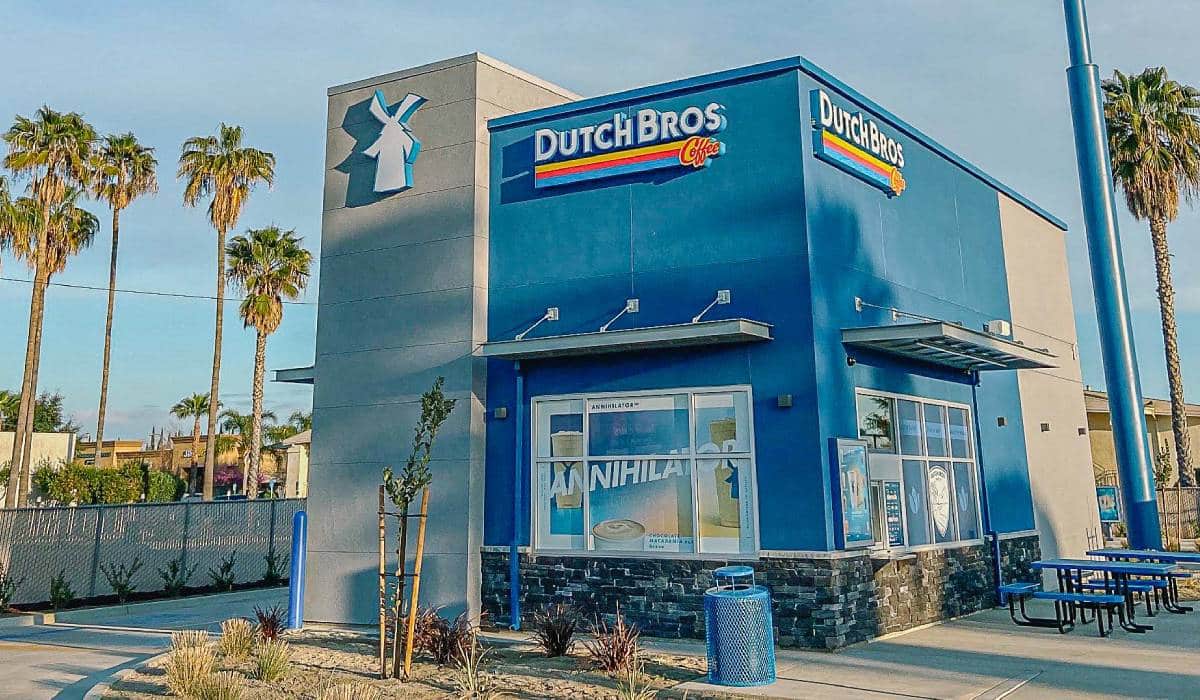Dutch Bros released its rewards program in early 2021, and each year has been its own journey.
Year 1 focused on launching, gathering, and understanding consumer preferences, CEO Joth Ricci said. The next year was about testing promotions and reward point levels. In 2023, Dutch Bros will take learnings from prior years and refine the program. Most notably, the chain announced that each dollar spent will result in three reward points instead of five, starting on or after March 27.
Ricci said this move will better align redemptions with pricing levels and ensure the long-term health of the program.
“The changes preserve the value of customer points earned to date,” Ricci said during the chain’s Q4 and full-year earnings call. “We are not changing the amount of points required to redeem a complimentary beverage. Instead, given the rise in menu prices in the past 18 months, we are adjusting the go-forward points earning rate. We believe those moves should create some headroom, enabling us to provide more targeted and customized offers to loyal customers, while allowing us to better focus on key initiatives.”
In terms of how consumers may respond to this shift, Ricci said there aren’t concerns and that it’s fair to the guest. Also, Dutch Bros’ objective this year is to avoid taking any additional menu pricing.
“I think we’re all aware of where our traffic trends are right now and what the consumer has been through,” CFO Charles Jemley said. ” … We take prices typically in two windows in the spring and the fall. We just made the rewards move. It wouldn’t be appropriate for us to make a pricing move at this stage. And also just looking at where our consumer is, we’d like to be able to absorb all these changes without rising prices in ’23 and let the consumer environment settle down.”
READ MORE:
Dutch Bros Builds with Unrelenting, Yet Measured Growth Plan
Dutch Bros’ 800-Unit Goal is Well Within Reach
In the fourth quarter, 64 percent of transactions came from rewards members. Ricci said there’s runway to expand further, especially in newer shops. Locations opened since 2019 have about 5 percent lower rewards penetration compared to units debuting before 2019. The company will also continue spreading the word about Dutch Pass, which allows loyalty users to pre-load funds and pay through the app. It’s not only more convenient for customers, but also helps quicken drive-thru lines. Dutch Bros executed promotions of Dutch Pass in the fourth quarter, which doubled the daily average of loads.
In Q3, the chain began allowing Dutch Pass users to share rewards in the form of free drinks. In the fourth quarter, the company rolled out digital gift cards.
“What we’d like to do is really move to the next phase of our rewards program and do more targeted incentives and offers to customers to get them to try different things and experience new things and we’re going to spend a fair portion of [cost-savings from the point system change] back in incentivizing particular things for customers,” Jemley said.
Company-operated same-store sales dipped 0.6 percent in Q4, but lifted 9.5 percent on a two-year stack and 15.2 percent on a three-year stack—both accelerations from Q3.
Traffic decelerated from negative 3 percent to negative 7 percent quarter-over-quarter, but Jemley noted, “we also want everybody to understand we’re lapping an amazingly good Q4 2021, it was our best quarter in 2021.”
For the first time since launching Dutch Rewards, the company recognized loyalty breakage in Q4 2022. In late 2021, Dutch Bros told customers that points earned in 2022 will expire in six-month increments and that points earned before 2022 would be grandfathered with a one-year expiration. Fourth quarter company-operated shop contribution margin was 210 basis points higher as a result of breakage. For the full year, contribution margin was $4.9 million higher because of 2021 expirations.
Joth said same-store sales results exceeded expectations. The negative 0.6 percent included an estimated 130 basis points of impact from sales transfer, due to Dutch Bros’ ongoing fortressing strategy. Last year, about 70 percent of new shops were infill, mostly in Texas. The company has opened almost 100 locations in the Lone Star State in the past two years. Overall, Dutch Bros debuted 133 shops in 2022, on top of 98 the previous year. AUV for stores open since 2019 is $2.05 million, and the class of 2022 is trending at $1.8 million. The chain ended the year with 671 shops, and projects at least 150 openings in 2023. This would put the brand above 800 before the year is over, eclipsing its long-term goal from 2018.
The brand believes it’ll achieve $1 billion in revenue in 2023 and expand to 1,0000 shops by the first half of 2025. In 10 to 15 years, Dutch Bros wants 4,000 units.
“Despite the well-documented economic disruption, we’ve exceeded our new shop development targets for the third consecutive year and have now doubled our shop count since March of 2019,” Ricci said.
In 2022, Dutch Bros generated $739 million in revenue and $91.2 million adjusted EBITDA. Both halves of the year had similar revenue growth. Meanwhile, adjusted EBITDA declined 32 percent in the first half because of inflationary costs, like dairy rising 25 percent. But EBITDA recovered in the latter half of 2022, growing 66 percent.






